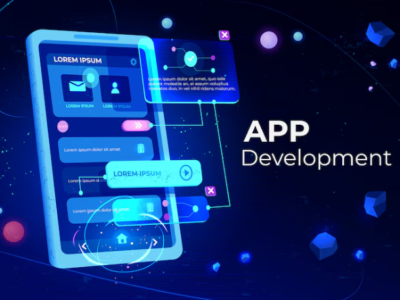
Introduction:
The advent of 5G technology has ushered in a new era of connectivity, promising unprecedented data speeds, lower latency, and the ability to support a myriad of emerging technologies. This transformative wave is not only reshaping the way we communicate but also challenging the very foundations of the server infrastructure that powers our digital ecosystem. In this exploration, we delve into the profound impact of 5G on rack server infrastructure, dissecting the key dynamics that underscore this technological shift. From increased data volumes and the imperative for edge computing to the demand for enhanced security and dynamic resource allocation, we unravel the intricate web of challenges and opportunities that 5G presents to the backbone of our digital world – the rack server infrastructure. As we navigate this landscape of change, it becomes evident that the evolution of 5G is not merely a wireless revolution but a catalyst for redefining the very architecture and capabilities of the servers that form the backbone of our interconnected future.
The Impact of 5G on Rack Server Infrastructure
The implementation of 5G technology has several implications for rack server infrastructure.
Increased Data Volume and Speed:
Data Processing Challenges: The higher data transfer rates of 5G networks mean that server infrastructure must be capable of processing and managing larger volumes of data at faster speeds. This requires improvements in server processing power, memory, and storage capacity to prevent bottlenecks.
Edge Computing and Latency Reduction:
Edge Server Deployment: With the deployment of 5G, there is a growing trend towards edge computing to reduce latency. Rack servers at the edge need to handle real-time processing requirements for applications such as autonomous vehicles, augmented reality, and smart cities.
Distributed Architecture:
Network Slicing Implications: Network slicing allows for the creation of isolated virtual networks to cater to specific applications. This necessitates a distributed architecture for rack servers, with instances deployed at different locations to support diverse slices efficiently.
Increased Connectivity:
IoT Integration: 5G’s high connectivity density is expected to drive the proliferation of IoT devices. Rack server will need to manage the data generated by these devices, requiring scalable and efficient solutions to handle the increased workload.
Energy Efficiency and Sustainability:
Efficient Hardware Design: Server manufacturers are focusing on designing energy-efficient hardware to meet sustainability goals. This includes the use of low-power processors, optimized cooling systems, and innovations in power supply to reduce the environmental impact of data centers.
Security Challenges:
Enhanced Security Measures: With the expanded attack surface presented by the increased number of connected devices and higher data volumes, robust security measures are essential. This involves implementing encryption, firewalls, and intrusion detection systems to safeguard data processed by rack servers.
Dynamic Resource Allocation:
NFV Implementation: Network Function Virtualization (NFV) is crucial for the dynamic allocation of resources in response to changing network demands. Rack servers must support NFV to efficiently scale up or down based on the requirements of different network slices or services.
Upgraded Hardware Requirements:
Performance Optimization: Upgrading hardware is essential to meet the performance demands of 5G. This includes deploying servers with high-performance CPUs, fast and large-capacity storage solutions, and ample memory to support the increased data throughput.
Data Center Architecture Changes:
Edge Data Centers: The shift towards edge computing may lead to the establishment of smaller data centers closer to end-users. Rack server in these edge data centers are strategically placed to reduce latency and improve the overall user experience for latency-sensitive applications.
Testing and Validation Challenges:
Interoperability Testing: Ensuring seamless integration between 5G networks and rack server infrastructure requires extensive testing. This includes interoperability testing to verify that servers can effectively communicate with and support the various components of 5G networks.
As the implementation of 5G continues to evolve, so too will the requirements for rack server infrastructure. Adaptations in hardware design, security protocols, and data center architecture will be essential to fully leverage the capabilities and benefits of 5G technology. This evolution represents a significant paradigm shift in how data is processed and managed, with a focus on efficiency, low latency, and improved connectivity.
Conclusion
In conclusion, the impact of 5G on rack server infrastructure is profound and multifaceted, heralding a paradigm shift in the way we conceive, deploy, and manage server resources. The confluence of higher data speeds, reduced latency, and the proliferation of connected devices presents both challenges and opportunities for the backbone of our digital ecosystem.
The surge in data volumes necessitates a reevaluation of server capabilities, pushing for continuous advancements in processing power, memory, and storage to seamlessly handle the deluge of information coursing through 5G networks. The rise of edge computing, enabled by 5G, demands a distributed architecture for rack servers, transforming them into nimble entities strategically positioned to cater to localized processing needs.
Security considerations take center stage as the expanded attack surface, courtesy of increased connectivity, requires robust measures to safeguard the integrity and confidentiality of data. Moreover, the dynamic resource allocation facilitated by technologies like Network Function Virtualization (NFV) underscores the need for adaptive and scalable server infrastructure.










